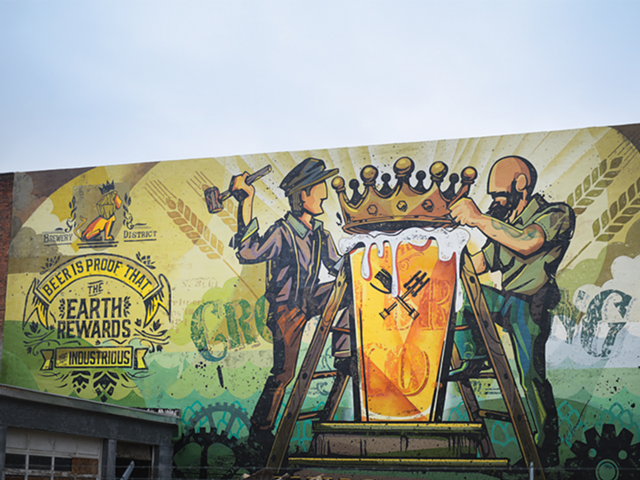Turns out Pete Rose wasn’t the only baseball player that artist Andy Warhol ever depicted. He wasn’t even the only Red. Tom Seaver came first — but accidentally.
That’s one surprise of Cincinnati Art Museum’s new and informative exhibition Up at Bat: Warhol and Baseball, on display in a first-floor gallery now through Aug. 2.
It’s a surprise because, supposedly, Warhol was so uninterested in baseball he didn’t even know who Rose was. He just created the piece as another “celebrity portrait” assignment.
The museum, wanting to celebrate Rose’s then-pending setting of Major League Baseball’s all-time hit record, paid $100,000 for the commissioned piece (and the accompanying 50 signed prints, which the museum sold at $2,500 each) in 1985. The Carl Solway Gallery handled the arrangements. It’s been on display ever since.
But the biggest surprise is that the show, organized by Curator of Prints Kristin Spangenberg with Director Cameron Kitchin, isn’t just a way to highlight that painting for this year’s All-Star Game in Cincinnati. Really, this is a show about Warhol, who died in 1987, more than Rose, who was banned from baseball in 1989 for gambling on the game.
It brings together the three known baseball-related artworks that Warhol created in his long career — the Rose piece; a commissioned 1977 portrait of Seaver (from the Andy Warhol Museum); and a 1962 oil paint and photo screen print of New York Yankee Roger Maris breaking Babe Ruth’s home run record (from Kansas City, Mo.’s Nelson-Atkins Museum of Art). There are also prints of Chairman Mao, Liz Taylor and Jackie Kennedy.
The show has much to see for a relatively small exhibition, and much to learn about this influential, fascinating artist and the complicated multicolor screen print process he mastered.
It also draws from the museum’s archives well to explain the history of the Rose piece and how this four-panel work that combines hand painting with a screen print came into being. Additionally, a series of artist proofs are on the wall to show Warhol’s step-by-step process to reach his finished work.
The 1962 Maris piece, coming early in Warhol’s career, is a tour de force. It’s a prime example of his then-new method of appropriating an image from mass culture — in this case, magazine photographs of Maris breaking the record in 1961 — and then making it art through alterations and repetition.
There are seven horizontal bands of the same Maris images, presented like a narratively unfolding graphic novel. Depending on the tonal values of the background, what we see changes from image to image. Sometimes, the ink becomes so thick we are looking at it rather than Maris. This is Pop Art at its most exciting.
The 40-by-40-inch Seaver artwork — acrylic paint and photo screen print on linen — is from a series of 10 athlete portraits commissioned by collector Richard Weisman in 1977. (One of the others was O.J. Simpson.) According to a 2009 Seattle Times story, Weisman commissioned eight sets of the Athlete Series for $800,000.
When commissioned, Seaver was a New York Met. But by the time Warhol could take a Polaroid photo of his subject, he had been traded to the Reds. The Polaroids appear to show Seaver in his Reds uniform. And the finished portrait on display here shows red paint around Seaver’s V-neck uniform collar.
The actual contract between Cincinnati Art Museum and Warhol is laid out in a display case page by page. It reveals just how carefully the museum had thought through what it wanted.
The finished piece was to be on stretched canvas and executed “in typical Warhol style.” The depiction of Rose was to be “derived from a media image” and Warhol was never to do another portrait of Rose, save for the accompanying prints. The contract did not spell out how the four-panel piece was to look, other than each panel was to be a color variation.
When an attempt to get Rose to sit for a Polaroid session fell through, Warhol turned to existing published photos as source material. He found one, taken by Gordon Baer, in the book Pete Rose on Hitting: How to Hit Better Than Anybody. (It’s on display, too.)
While it shows Rose in a classic right-handed batting stance, it’s from a chapter on bunting and represents where to hold the bat to start. Fortunately, Warhol didn’t pick the next photo — the bunting stance — to reproduce.
For more information, visit cincinnatiartmuseum.org.
CONTACT STEVEN ROSEN: [email protected]





